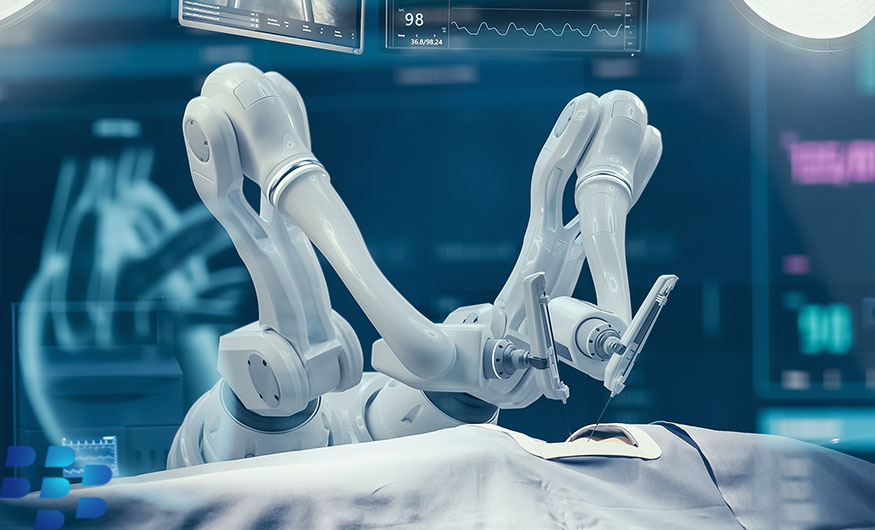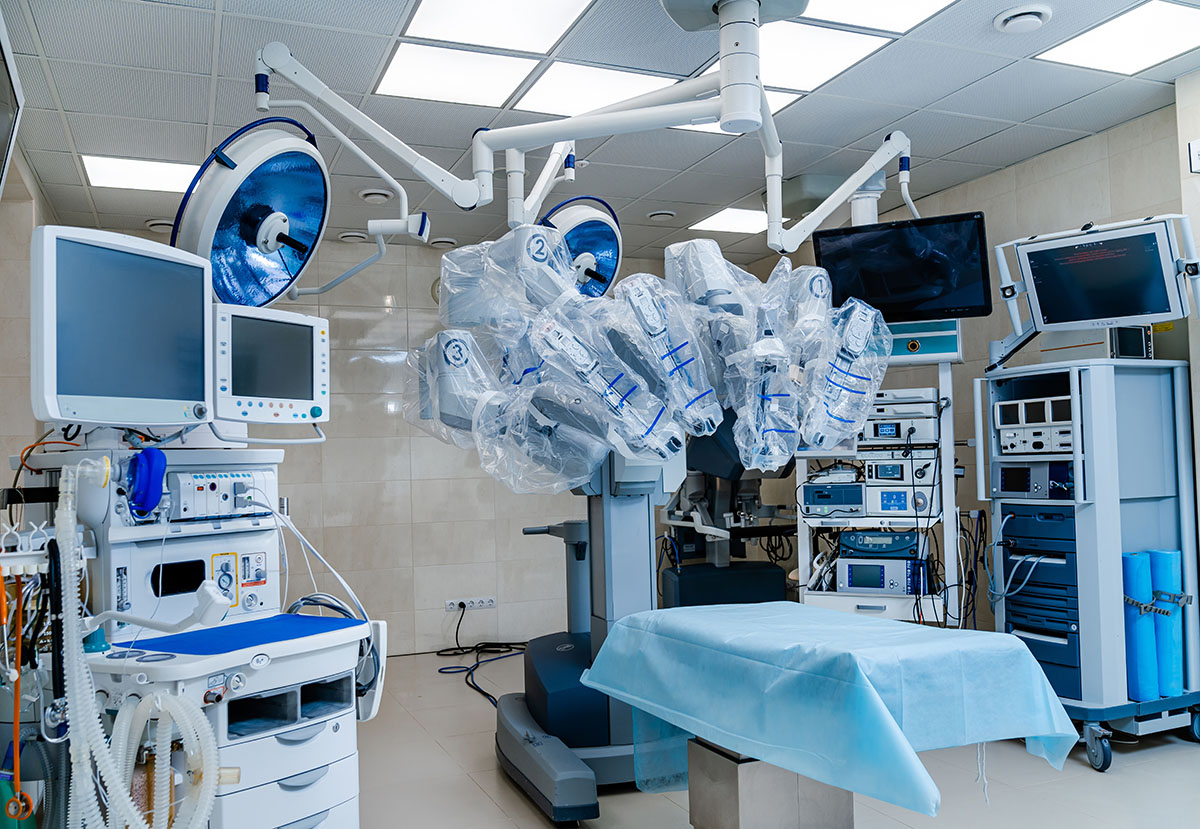Revolutionizing Surgical Robotics to Improve Patient Outcomes
Robot-assisted surgeries are transforming the way medical procedures are performed. Numerous benefits — including reduced complications, quicker recovery times, and briefer hospital stays — are rapidly being realized.
Why Healthcare Is Turning to Surgical Robotics
New cutting-edge technology offers a myriad of benefits, not only for patients but also for surgeons and healthcare teams. By enabling surgeons to perform procedures with more precision and control, robotics can minimize human error and improve patient safety. For patients, the benefits of surgical robotics extend beyond the operating room. Shorter hospitalization time, typically associated with robot-assisted procedures, and minimally invasive surgery often lead to better long-term outcomes.
This is driving demand in the global surgical robotics market. The market was valued at $4.4 billion in 2022 and is expected to grow with a compound annual growth rate (CAGR) of 18% from 2023 to 2030, according to a recent report by Grand View Research, Inc.
Robot-Assisted Surgeries Across the Medical Landscape
In-demand medical specialties — including orthopedics, gynecology, urology, and general surgery — have increasingly embraced robot-assisted surgeries.
In orthopedics, robot-assisted surgeries are widely employed for procedures like total knee arthroplasty — that is, replacement — and total hip arthroplasty. The precise control offered by robotic systems ensures accurate implant positioning and improved joint function. In gynecology, robotic-assisted procedures have gained popularity for hysterectomies and other complex surgeries. The robotic instruments' enhanced dexterity enables surgeons to make smaller incisions, resulting in reduced trauma and faster recovery times for patients. These are examples of the benefits offered through robot-assisted procedures.
The Crucial Role of Software in Surgical Robotics
The success of robot-assisted surgeries heavily relies on sophisticated software solutions that enable exacting precision and seamless communication between surgeons and robotic platforms. The software behind surgical robotics empowers surgeons with finely-tuned control and real-time feedback.
BlackBerry® QNX® is the real-time operating system (RTOS) for many software developers building surgical robotic applications. QNX helps ensure high-performance and real-time deterministic behavior, so these robotic systems can respond instantaneously to commands without delays or disruptions. This feature is particularly critical in delicate procedures where split-second decisions can make a significant difference in patient outcomes.
The QNX microkernel architecture, which is used in the QNX® Neutrino® RTOS, QNX® OS for Safety, QNX® Hypervisor, and QNX® Hypervisor for Safety, is designed to be fail-safe and fault-tolerant. Its architecture isolates every application, driver, protocol stack, and filesystem. This means that a failed component or process won’t take down other components or the kernel, and can be restarted immediately with minimal impact on performance.
In addition, with its small attack surface, the microkernel is also considered inherently more secure than competing architectures. This added layer of security is increasingly important, as surgical robotics become more connected with other devices in the operating room.
With more powerful System on Chips (SoCs) becoming mainstream in the market, mixed-criticality systems are becoming popular, as they allow designers to take advantage of the increased availability of compute power. Mixed criticality systems, wherein safety-critical functions and non-safety-critical functions are combined, can easily be achieved with the QNX OS for Safety and the QNX Hypervisor for Safety.
With QNX OS for Safety, the same microkernel architecture guarantees separation between safety-critical functions and non-safety-critical functions. QNX Hypervisor for Safety can further separate and isolate guest systems from each other in virtual machines, and still maintain safety-critical functions, either in a guest system or in the hypervisor itself. This gives you design flexibility to ensure your safety-critical surgical systems are isolated and protected from outside interference.
BlackBerry QNX software also adheres to safety certification standards such as IEC 62304 Class C, assuring medical professionals and patients that the robotic systems operate with the highest level of safety and reliability.
Streamlining Safety Certification and Enhancing Device Security
When it comes to reliability in surgical robotics, BlackBerry QNX stands as a trusted and proven solution. With its high performance real-time deterministic behavior and adherence to rigorous safety standards, the BlackBerry QNX software has earned its place in many of the leading surgical robotics systems in use today.
Medical device manufacturers rely on the foundational software that BlackBerry QNX provides to enable the delivery of optimal patient outcomes. The software's consistent and dependable performance ensures that surgical robots operate seamlessly and efficiently, enhancing the overall safety and success of robot-assisted surgeries across various medical specialties.
With its proven reliability and widespread adoption, BlackBerry QNX continues to revolutionize the field of robot-assisted surgeries, setting new standards for the future of healthcare.
To learn more about how BlackBerry QNX provides manufacturers with the foundational software needed to build safe, secure, and reliable medical devices, or to get help with your next certification or safety-critical project, contact BlackBerry’s functional safety experts.



